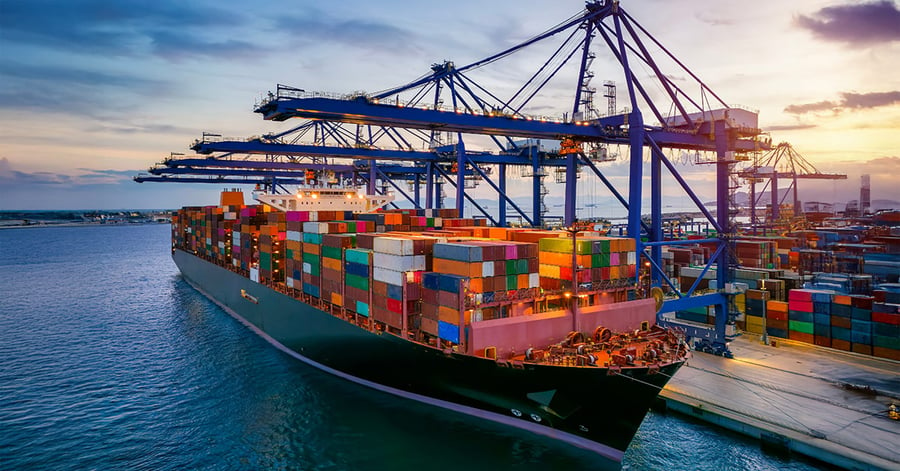
Digital Transformation in Port Operations: Navigating Complexity for Improved Efficiency
Digital Transformation in Port Operations: Navigating Complexity for Improved Efficiency
11:04
Published :

Port operations are the lifeblood of global trade. Far from a simple point of transit, a modern port is a bustling, interlinked ecosystem where a minor disruption can cascade into significant delays, soaring costs, and a compromised customer experience. For port authorities and operators, the challenge isn't just about moving cargo; it's about mastering a dynamic environment fraught with pain points that demand earnest, thoughtful solutions.
At its core, a port's efficiency hinges on seamless coordination. Yet, several inherent complexities and operational pitfalls frequently impede this flow:
A core challenge in port operations is efficient financial management. Inefficient workflows often lead to missed collections from customers, directly affecting cash flow. Additionally, delays can trigger penalties from vendors, further diminishing profitability. Without automated financial systems, managing these critical touchpoints becomes error-prone and labor-intensive, resulting in significant financial leakage. By embracing digital financial solutions, ports can streamline financial processes, reduce errors, and mitigate costly penalties, ultimately enhancing overall port efficiency.
The heart of efficient port operations relies on heavy machinery, especially cranes. These are not just lifting devices; they are precision instruments essential for the smooth and continuous movement of goods. Cranes play a pivotal role in maintaining the uptime of port operations, and their performance directly impacts overall port efficiency. As such, effective crane maintenance is crucial for minimizing downtime and ensuring maximum throughput.
Cranes are the backbone of efficient port operations. Each type of crane plays a unique role in ensuring the smooth transfer of goods:
The efficient operation of these cranes is critical to minimizing port delays and optimizing throughput. With the help of digital crane management systems, ports can monitor and maintain crane performance in real-time, improving both uptime and productivity.
Consider a scenario: a port operates 10 Quay cranes, each capable of moving approximately 30 containers per hour. Even a moderately sized vessel might carry 5,000 to 10,000 TEUs (Twenty-foot Equivalent Units). If all 10 cranes operate at peak efficiency, they could move 300 containers per hour.
For a large vessel carrying 7,200 TEUs:
However, a mere 10% reduction in productivity across these cranes can lead to significant bottlenecks.
This means what might have taken one day to unload a large vessel now stretches into longer periods. For an even larger vessel, say 10,000 TEUs, the impact is more pronounced:
This seemingly small reduction leads to vessel wait times and choked berths, creating substantial operational inefficiencies and financial penalties for the port and shipping lines. This directly impacts customer satisfaction and the port's reputation. Moreover, the absence of real-time tracking for maintenance costs means operators often lack a clear picture of the true expenditures associated with keeping this vital equipment operational.
Beyond equipment, fundamental business processes often suffer from a lack of digital integration:
The path to overcoming these challenges lies in strategic digital transformation, leveraging technology to instill clarity, transparency, and support across all port operations. Ramco Systems offers a comprehensive suite of solutions designed to address these pain points directly:
Implementing intelligent workflows automates routine tasks, reducing manual errors and accelerating processes. Crucially, automated notifications – both internal and external to customers – ensure all stakeholders are informed in real-time about cargo status, vessel movements, and any potential delays. It's important to note that while ERP systems like Ramco manage the financial and operational aspects of these notifications, the real-time granular tracking of cargo and ship movements typically resides within a dedicated Terminal Operating System (TOS), with which an ideal ERP seamlessly integrates. This fosters transparency and significantly enhances customer experience.
Ramco's solutions enable a shift from reactive to proactive maintenance strategies for critical assets like cranes.
Furthermore, in the event of a breakdown, the speed with which maintenance can be executed is paramount. Digital tools streamline work order creation, technician dispatch, and spare parts management, ensuring rapid resolution and minimal operational disruption. Crucially, these systems provide robust tracking of maintenance costs, offering clear insights into expenditures and enabling better budget management.
Integrated dashboards provide a real-time, comprehensive view of all port operations. From vessel traffic and cargo movement to equipment status and financial performance, these intuitive interfaces empower port managers with actionable insights, facilitating faster, more informed decision-making and proactive problem-solving.
A sophisticated pricing engine automates the complex task of calculating charges, taking into account various factors like cargo type, volume, service level, and customer agreements. This ensures consistent, accurate, and competitive pricing, optimizing revenue and simplifying billing. It is worth noting that most ERPs do not offer a pricing engine, as it needs to be significantly customized for individual ports.
Dedicated supplier portals create a transparent and efficient channel for communication and collaboration with vendors. This enables real-time information exchange regarding deliveries, services, and invoicing, eliminating delays and fostering stronger supplier relationships.
Ramco's solutions provide the flexibility and robustness to seamlessly manage all port business models – container, bulk, and break bulk – within a single, integrated platform. This eliminates data silos, streamlines operations, and provides a holistic view of the port's multifaceted activities, enabling efficient resource allocation and optimized service delivery across all cargo types.
The complexities of port operations are undeniable, but they are not insurmountable. By embracing digital transformation, port authorities can move beyond reactive problem-solving to proactive optimization. Ramco Systems offers the tools and expertise to navigate these challenges, transforming potential pain points into opportunities for enhanced efficiency, improved customer satisfaction, and sustained growth. The earnest pursuit of operational excellence, supported by intelligent technology, is not just a strategic advantage—it is the imperative for ports to thrive in the ever-evolving landscape of global trade.
Enterprise asset management (EAM) involves the management of mission critical assets of an organization throughout each asset's lifecycle. EAM is used to plan, optimize, execute, and track the needed maintenance activities with the associated priorities, skills, materials, tools, and information. The aim is to optimize the quality and utilization of assets throughout their lifecycle, increase productive uptime and reduce operational costs.
Enterprise asset management (EAM) involves the management of the maintenance of physical assets of an organization throughout each asset's lifecycle. EAM is used to plan, optimize, execute, and track the needed maintenance activities with the associated priorities, skills, materials, tools, and information.
The software helps in effective maintenance of assets through preventive, predictive, shutdown and breakdown maintenance strategies. The system also helps enterprises mitigate equipment risks by enhanced safety standards. The streamlined operations and improved asset performance helps organizations increase their investment effectiveness.
EAM is important because it helps organizations track, assess, manage and optimize asset quality and reliability. Asset intensive Organizations have hundreds, thousands, even millions of assets which needs to be maintained to maximize / optimize life of these assets to increase the return on investment.
The key features of effective EAM are:
Asset Intensive companies under the following Industries :
Contact us for a meeting and schedule a demo
This differs on case to case basis, based on the type of installation and unique industry specific requirements. Contact us for a meeting and schedule a demo.
This differs on case to case basis, based on the type of installation and unique industry specific requirements. Contact us for a meeting and schedule a demo.
Stay Connected, follow us on LinkedIn / Twitter to know more about EAM Software latest trends.

All Rights Reserved. © Copyright 2024. Ramco Systems.